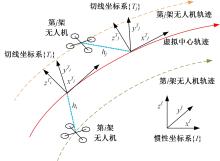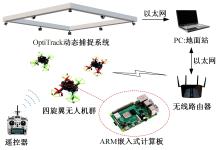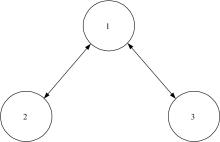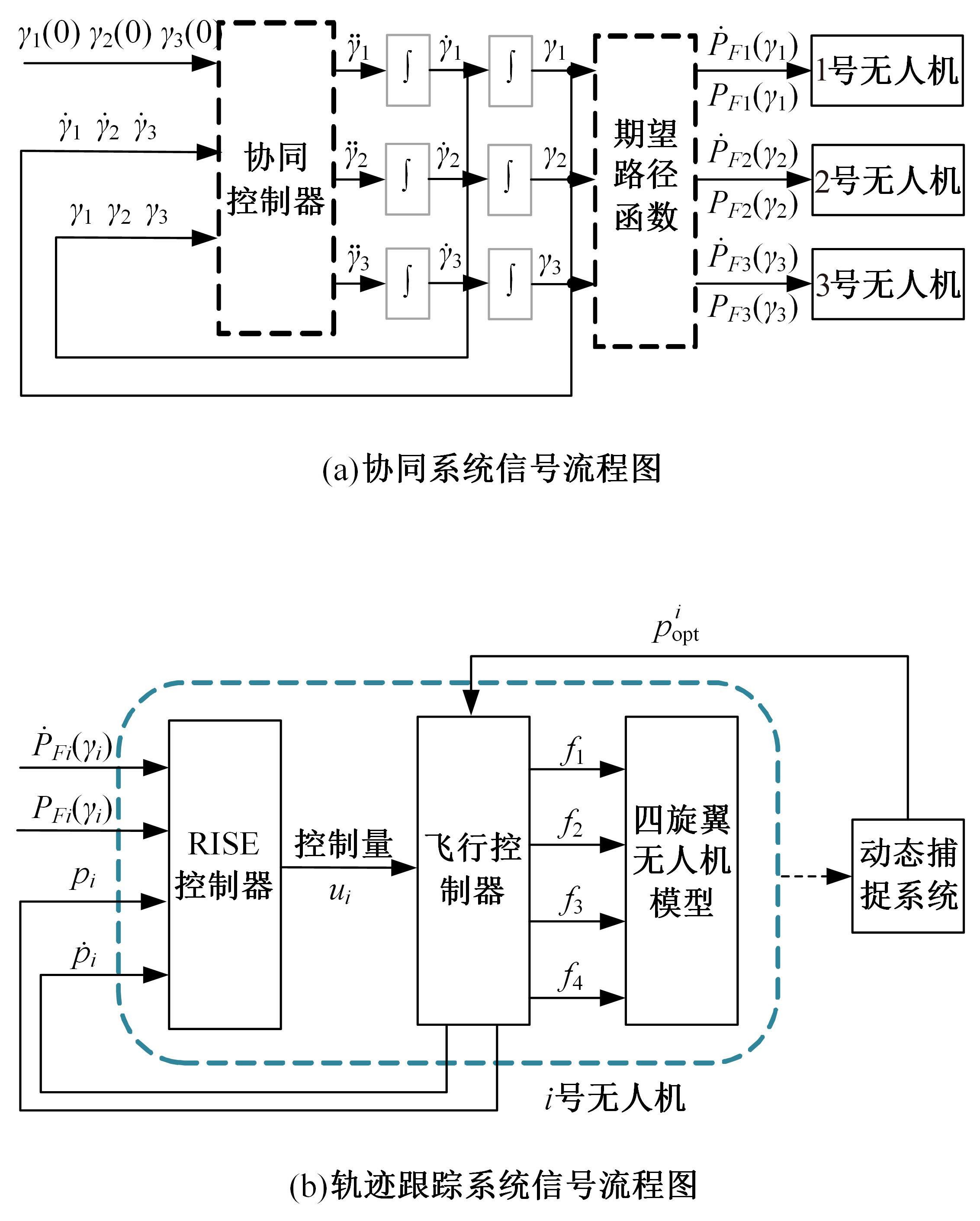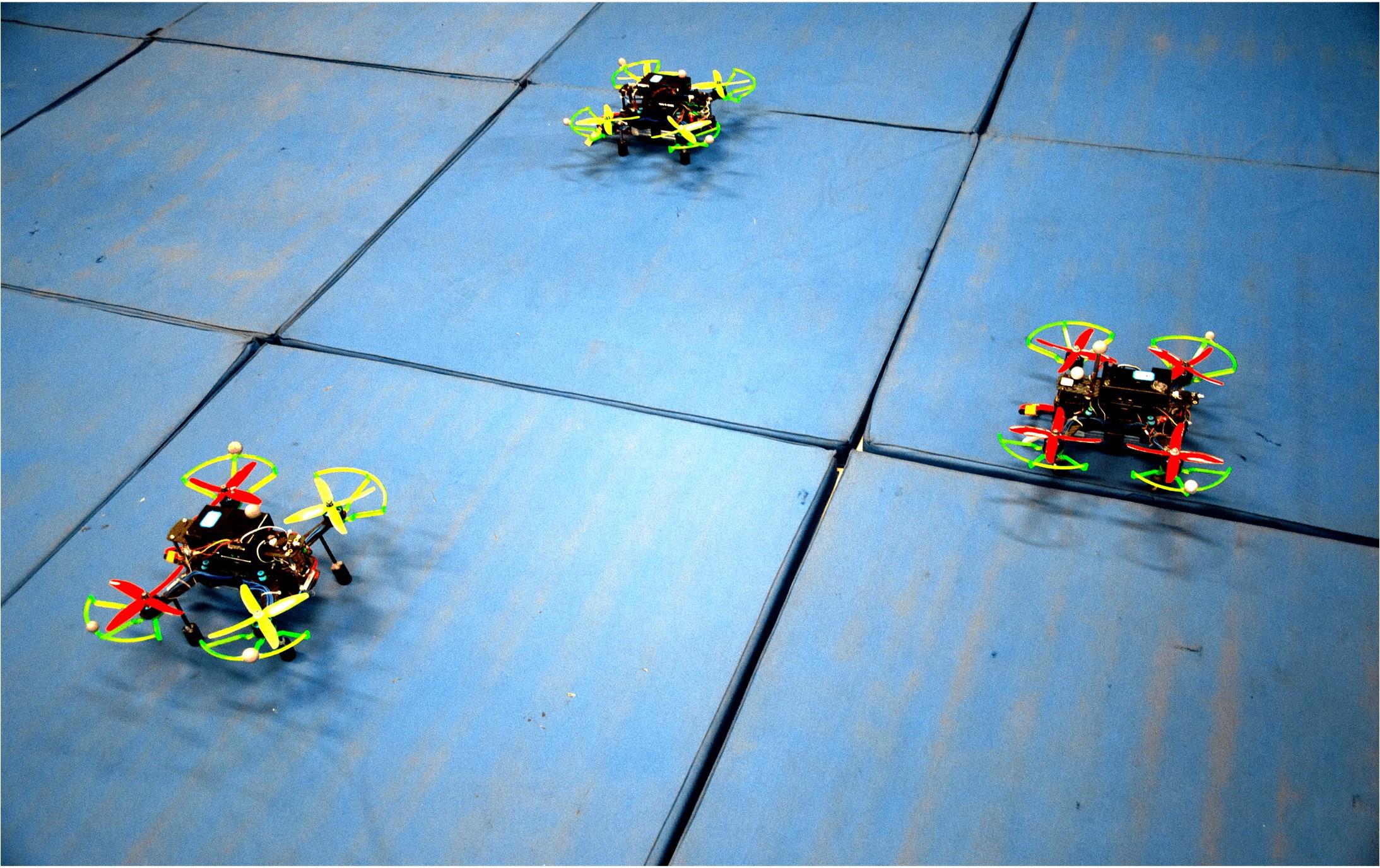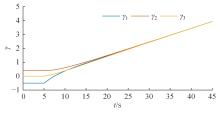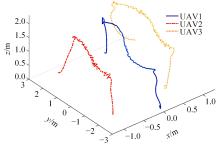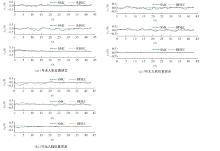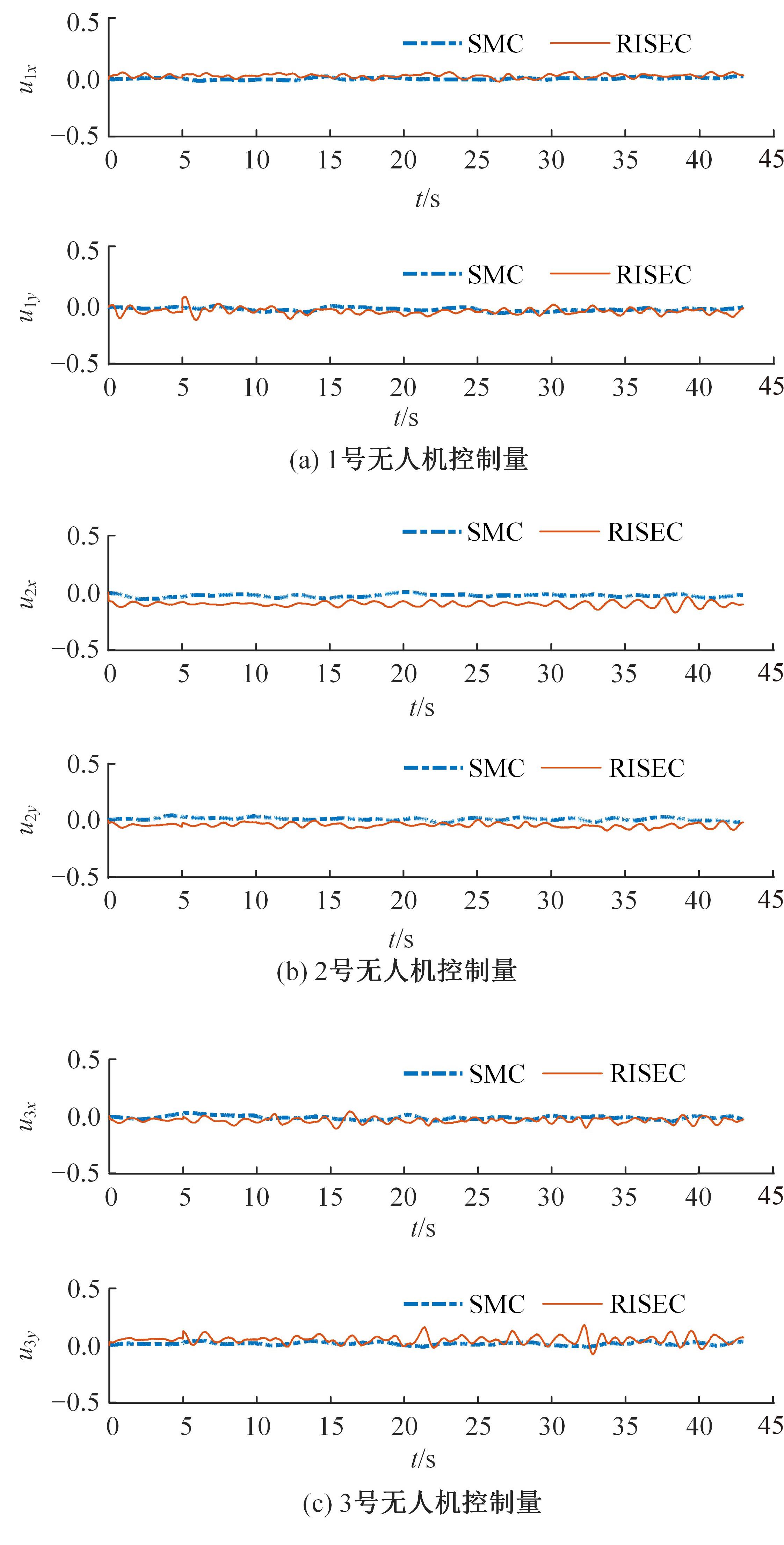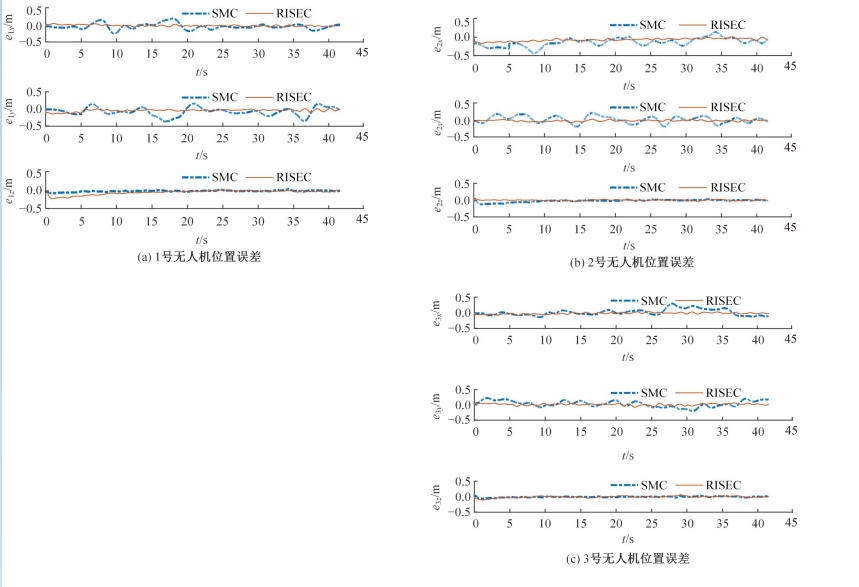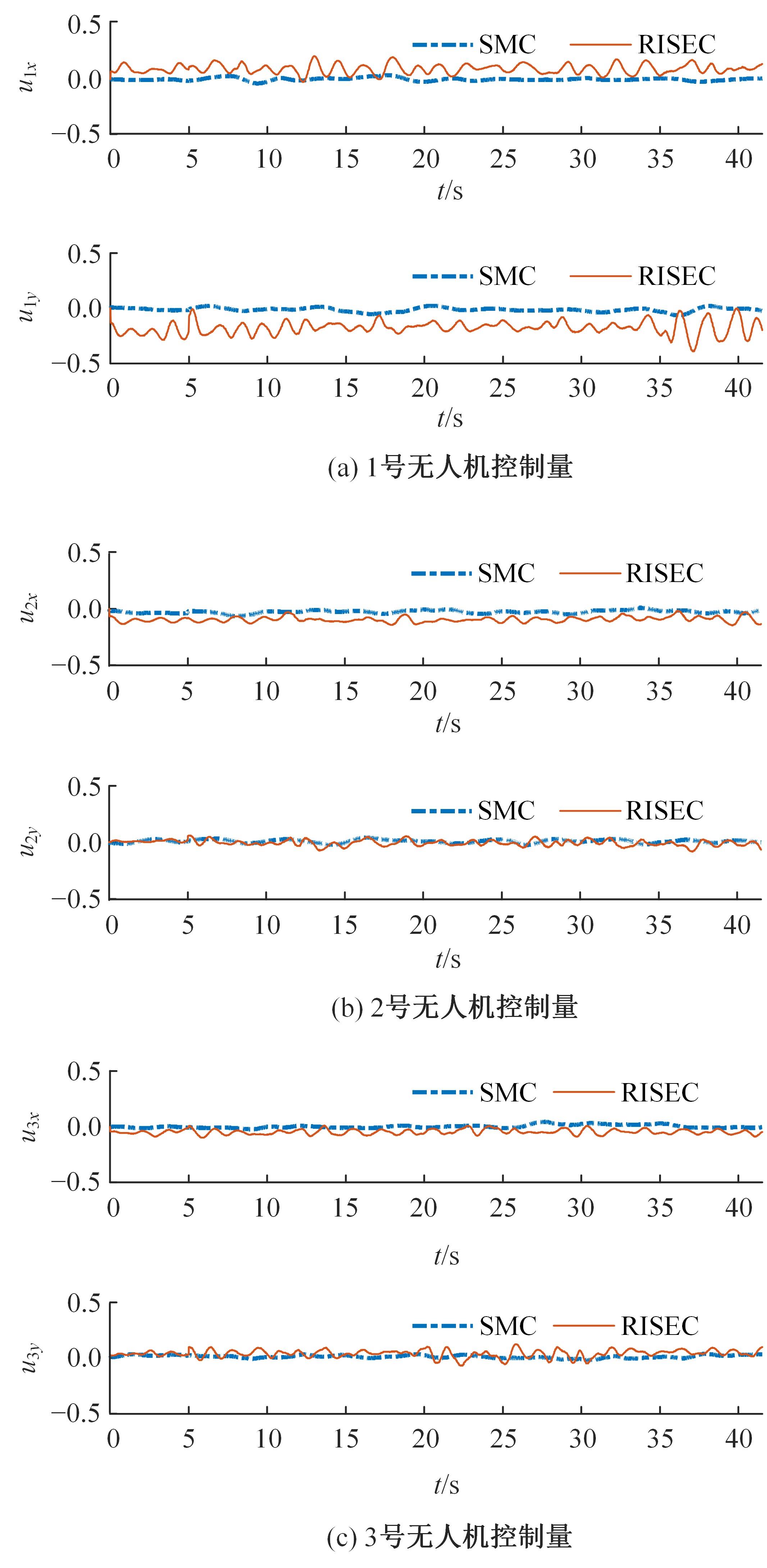Journal of Jilin University(Engineering and Technology Edition) ›› 2024, Vol. 54 ›› Issue (7): 2093-2103.doi: 10.13229/j.cnki.jdxbgxb.20221143
Distributed robust tracking control for multiple unmanned aerial vehicles: theory and experimental verification
Bin XIAN1( ),Yin-xin WANG1,Ling WANG2
),Yin-xin WANG1,Ling WANG2
- 1.School of Electrical and Information Engineering,Tianjin University,Tianjin 300072,China
2.Tianjin Navigation Instrument Research Institute,Tianjin 300451,China
CLC Number:
- TP273
| 1 | Elmokadem T. Distributed coverage control of quadrotor multi-UAV systems for precision agriculture[J]. IFAC-Papers Online, 2019, 52(30): 251-256. |
| 2 | 鲜斌,许鸣镝,王岭. 分布式无人机队列控制与动态障碍规避设计[J]. 控制与决策, 2022, 37(9): 2226-2234. |
| Xian Bin, Xu Ming-di, Wang Ling. Distributed unmanned aerial vehicle platoon control with dynamic obstacle avoidance[J]. Control and Decision, 2022, 37(9): 2226-2234. | |
| 3 | Lagkas T, Argyriou V, Bibi S, et al. UAV IoT framework views and challenges: towards protecting drones as "Things"[J]. Sensors, 2018, 18(11):No. 4015. |
| 4 | Videras Rodríguez M, Melgar S G, Cordero A S, et al. A critical review of unmanned aerial vehicles (UAVs) use in architecture and urbanism: scientometric and bibliometric analysis[J]. Applied Sciences, 2021, 11(21): No.9966. |
| 5 | Ali Z A, Israr A, Alkhammash E H, et al. A leader-follower formation control of multi-UAVs via an adaptive hybrid controller[J]. Complexity, 2021, 2021:No. 9231636. |
| 6 | Turpin M, Michael N, Kumar V. Trajectory design and control for aggressive formation flight with quadrotors[J]. Autonomous Robots, 2012, 33(1): 143-156. |
| 7 | Zhou D, Wang Z, Schwager M. Agile coordination and assistive collision avoidance for quadrotor swarms using virtual structures[J]. IEEE Transactions on Robotics, 2018, 34(4): 916-923. |
| 8 | Dong X W, Yu B C, Shi Z Y, et al. Time-varying formation control for unmanned aerial vehicles: theories and applications[J]. IEEE Transactions on Control Systems Technology, 2015, 23(1): 340-348. |
| 9 | Xie W, Cabecinhas D, Cunha R, et al. Cooperative path following control of multiple quadcopters with unknown external disturbances[J]. IEEE Transactions on Systems, Man, and Cybernetics: Systems, 2022, 52(1): 667-679. |
| 10 | 王丹丹, 宗群, 张博渊, 等. 多无人机完全分布式有限时间编队控制[J]. 控制与决策, 2019, 34(12): 2656-2660. |
| Wang Dan-dan, Zong Qun, Zhang Bo-yuan, et al. Fully distributed finite-time formation control for multiple UAVs[J]. Control and Decision, 2019, 34(12): 2656-2660. | |
| 11 | Aggarwal S, Kumar N. Path planning techniques for unmanned aerial vehicles: a review, solutions, and challenges[J]. Computer Communications, 2020, 149: 270-299. |
| 12 | Zhang D, Duan H. Social-class pigeon-inspired optimization and time stamp segmentation for multi-UAV cooperative path planning[J]. Neurocomputing, 2018, 313: 229-246. |
| 13 | 蒋婉玥,王道波,王寅,等. 基于时变向量场的多无人机编队集结控制方法[J]. 控制理论与应用, 2018, 35(9): 1215-1228. |
| Jiang Wan-yue, Wang Dao-bo, Wang Yin, et al. A vector field based method for multi-UAV simultaneous arrival[J]. Control Theory & Applications, 2018, 35(9): 1215-1228. | |
| 14 | 张佳龙,闫建国,张普. 基于自适应方法的多无人机编队队形控制[J]. 航空学报, 2020, 41(1): 234-247. |
| Zhang Jia-long, Yan Jian-guo, Zhang Pu. Multi-UAV formation forming control based on adaptive method under wind field disturbances[J]. Acta Aeronautica et Astronautica Sinica, 2020, 41(1): 234-247. | |
| 15 | Liao F, Teo R, Wang J L, et al. Distributed formation and reconfiguration control of VTOL UAVs[J]. IEEE Transactions on Control Systems Technology, 2017, 25(1): 270-277. |
| 16 | Hua Y Z, Dong X W, Han L, et al. Finite-time time-varying formation tracking for high-order multiagent systems with mismatched disturbances[J]. IEEE Transactions on Systems, Man, and Cybernetics: Systems, 2020, 50(10): 3795-3803. |
| 17 | 李正平, 鲜斌. 基于虚拟结构法的分布式多无人机鲁棒编队控制[J]. 控制理论与应用, 2020, 37(11): 2423-2431. |
| Li Zheng-ping, Xian Bin. Robust distributed formation control of multiple unmanned aerial vehicles based on virtual structure[J]. Control Theory & Applications, 2020, 37(11): 2423-2431. | |
| 18 | 鲜斌,李杰奇,古训. 基于非线性扰动观测器的无人机地面效应补偿[J]. 吉林大学学报:工学版, 2022, 52(8): 1926-1933. |
| Xian Bin, Li Jie-qi, Gu Xun. Ground effects compensation for an unmanned aerial vehicle via nonlinear disturbance observer[J]. Journal of Jilin University (Engineering and Technology Edition), 2022, 52(8): 1926-1933. | |
| 19 | Cunha R, Antunes D, Gomes P, et al. A path-following preview controller for autonomous air vehicles[C]∥AIAA Guidance, Navigation, and Control Conference and Exhibit,Keystone, USA,2006: 6715. |
| 20 | Xian B, Dawson D M, de Queiroz M S, et al. A continuous asymptotic tracking control strategy for uncertain nonlinear systems[J]. IEEE Transactions on Automatic Control, 2004, 49(7): 1206-1211. |
| 21 | 温家鑫,赵国荣,张超,等. 无人机三维编队保持滑模控制器设计[J]. 电光与控制, 2020,27(5): 14-18. |
| Wen Jia-xin, Zhao Guo-rong, Zhang Chao, et al. Design of a sliding mode controller for three-dimensional formation keeping of UAVs[J]. Electronics Optics&Control, 2020, 27(5): 14-18. |
| [1] | Shou-tao LI,Jia-lin LI,Qing-yu MENG,Hong-yan GUO. Loop-closure detection algorithm based on point cloud histogram and vehicle positioning method [J]. Journal of Jilin University(Engineering and Technology Edition), 2023, 53(8): 2395-2403. |
| [2] | Jiang-ping HU,Zi-can ZHOU,Bo CHEN. On fixed⁃time multi⁃target localization and circumnavigation control using bearing measurements [J]. Journal of Jilin University(Engineering and Technology Edition), 2023, 53(3): 923-932. |
| [3] | Xiao-yi WANG,Di-yi LIU,Jia-bin YU,Zhuo-yun HE,Zhi-yao ZHAO. Fault detection method of multirotor unmanned aerial vehicle formation in complex wind field environment [J]. Journal of Jilin University(Engineering and Technology Edition), 2023, 53(3): 823-831. |
| [4] | Lei YUAN,Ren HE. Active disturbance rejection control of slip ratio based on antilock brake system brake bandwidth parameter tuning [J]. Journal of Jilin University(Engineering and Technology Edition), 2023, 53(12): 3335-3341. |
| [5] | Chong ZHANG,Yun-feng HU,Xun GONG,Yao SUN. Design of model⁃free adaptive sliding mode controller for cathode flow of fuel cell [J]. Journal of Jilin University(Engineering and Technology Edition), 2022, 52(9): 2085-2095. |
| [6] | Yun-feng HU,Tong YU,Hui-ce YANG,Yao SUN. Optimal control method of fuel cell start⁃up in low temperature environment [J]. Journal of Jilin University(Engineering and Technology Edition), 2022, 52(9): 2034-2043. |
| [7] | Yuan-hong LIU,Pan-pan GUO,Yan-sheng ZHANG,Xin LI. Feature extraction of sparse graph preserving projection based on Riemannian manifold [J]. Journal of Jilin University(Engineering and Technology Edition), 2021, 51(6): 2268-2279. |
| [8] | De-feng HE,Jie LUO,Xiao-xiang SHU. Delay-feedback predictive cruise control of autonomous and connected vehicles [J]. Journal of Jilin University(Engineering and Technology Edition), 2021, 51(1): 349-357. |
| [9] | Wen⁃jing WU,Run⁃chao CHEN,Hong⁃fei JIA,Qing⁃yu LUO,Di SUN. Collaborative control method of vehicles in U⁃turn zone under environment of cooperative vehicle infrastructure system [J]. Journal of Jilin University(Engineering and Technology Edition), 2019, 49(4): 1100-1106. |
| [10] | LI Jing, HAN Zuo-yue, YANG Wei, XING Guo-cheng, ZHOU Yu. Drive system for magnetorheological suspension based on nonlinear damper electric model [J]. 吉林大学学报(工学版), 2018, 48(3): 645-651. |
| [11] | WANG Chun-yang, XIN Rui-hao, SHI Hong-wei. Decreasing time delay auto-disturbance rejection control method for large time delay systems [J]. 吉林大学学报(工学版), 2017, 47(4): 1231-1237. |
| [12] | LIU Yang, SUN Ze-chang, WANG Meng. Brake force cooperative control and test for integrated electro-hydraulic brake system [J]. 吉林大学学报(工学版), 2016, 46(3): 718-724. |
| [13] | WEI Wei, DAI Ming, LI Jia-quan, MAO Da-peng, WANG Hao. Design of airborne opto-electric platform control system based on ADRC and repetitive control theory [J]. 吉林大学学报(工学版), 2015, 45(6): 1924-1932. |
| [14] | WANG Yan-zhong, HOU Liang-wei, LYU Qing-jun, ZHAO Xing-fu, WU Can-hui. Processing technology of face gear complex surface based on bus control [J]. 吉林大学学报(工学版), 2015, 45(6): 1836-1843. |
| [15] | MA Wen-xing, ZHANG Yan, LEI Yu-long. Design and test of control system of hydrodynamic automotive transmission for heavy vehicle [J]. 吉林大学学报(工学版), 2015, 45(5): 1455-1460. |
|
||
